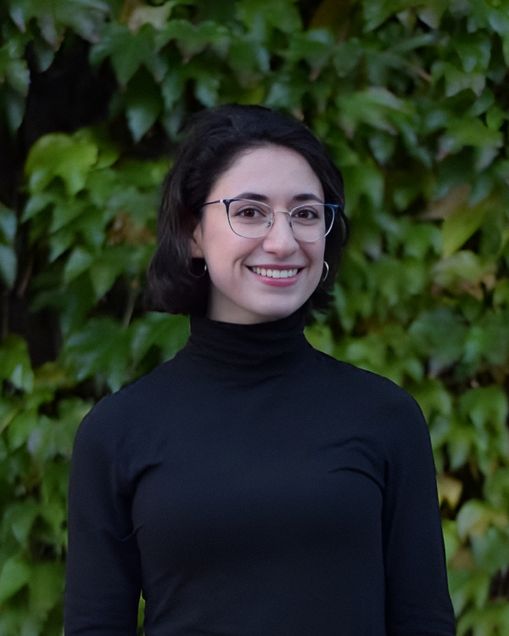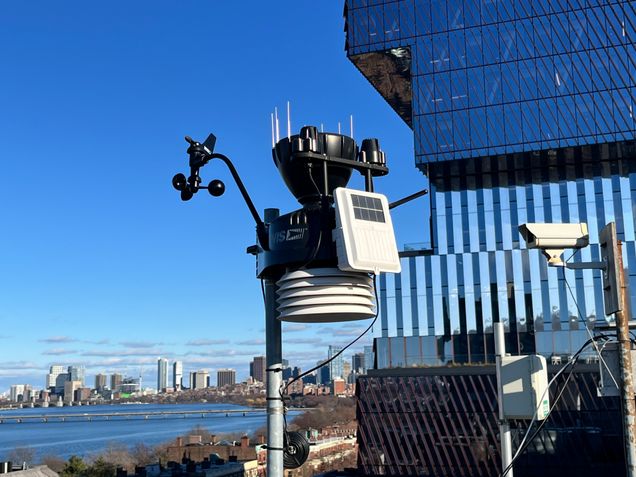#BUandBoston: Tackling Urban Heat – Why Accurate Data is Key
This post is part of our #BUandBoston series, highlighting the work and research of BU students, faculty, and staff throughout the City of Boston and the Greater Boston region. Interested in having your Boston-related work featured? Tag us on Instagram or Twitter (@BUonCities) using the #BUandBoston or send us an email at ioc@bu.edu.
 Far from a one-size-fits-all crisis from city to city, climate change uniquely harms urban areas across the globe. Cities with different urban landscapes, climates, and local environmental initiatives all experience the frightening effects of global warming in a variety of ways. Because of this, cities need access to detailed and accurate climate models to tailor climate solutions according to their particular environmental needs. Through the World Resources Institute’s Data for Cool Cities initiative, BU Earth & Environment Ph.D. candidate and URBAN trainee Leeza Moldavchuk aims to bridge these gaps and better understand urban climate monitoring and modeling data needs.
Far from a one-size-fits-all crisis from city to city, climate change uniquely harms urban areas across the globe. Cities with different urban landscapes, climates, and local environmental initiatives all experience the frightening effects of global warming in a variety of ways. Because of this, cities need access to detailed and accurate climate models to tailor climate solutions according to their particular environmental needs. Through the World Resources Institute’s Data for Cool Cities initiative, BU Earth & Environment Ph.D. candidate and URBAN trainee Leeza Moldavchuk aims to bridge these gaps and better understand urban climate monitoring and modeling data needs.
In collaboration with the World Resources Institute, Leeza is working with other researchers to develop a high resolution urban heat model that can be applied to a wide range of cities, varying in size, form, land use, and regional climate. The differences from city to city present the challenge of how to create a model that accounts for these differences and is generalizable across urban areas. Confronting this obstacle requires a keen understanding of where these differences lie: “With larger cities, you might have more diverse land use with a greater mix of residential, commercial, and industrial areas,” Leeza continues, “In addition to your standard urban heat island effect, you might see this urban heat archipelago phenomenon, where pockets of higher heat are unevenly distributed throughout the city (only observable at higher spatial resolution).”
The size of cities is one of many factors that create unique climate environments. Beyond size, Leeza elaborates on how city layout influences urban heat: “When you look at Boston from above versus New York from above, it’s a totally different picture. So your building density, street orientation, green space coverage––that’s all going to determine how you experience heat. And adding on geographic location and regional climate patterns complicates it even further.” As Leeza expands the scope of her research to new regions, she wants to see how the model breaks and how it can be more fine-tuned to encompass a broader range of cities with different constraints.
In the absence of sufficient data on heat in urban areas, both scientists and communities themselves have specific bundles of needs. Through Leeza’s work with the Baltimore Social-Environmental Collaborative (BSEC) at Johns Hopkins University’s 21st Century Cities Initiative, she demonstrates how collaboration can prioritize the needs of both scientists and the community, even when these goals clash:
“The problem is a lot of times the community needs, and science needs don’t always align, which is where I was brought onto the project. They [BSEC] were able to prioritize community needs and put weather stations in places where it was important to monitor heat, but these aren’t necessarily the same weather stations that we need for our air temperature modeling work. When expanding this, they were looking for where they could fill in science data gaps because they already focused on community data gaps.”
While communities may need to prioritize heat monitoring in underserved neighborhoods, weather station data from only these areas will not provide the spatial coverage necessary to support the heat modeling work. With a scarcity of research-grade weather data, Leeza highlights that researchers from diverse disciplines must come together to bridge these gaps while engaging with the local community and government: “People are laying the groundwork. There’s a lot of good research and connections being made, but it’s all about actually implementing these interventions where they need to be.” The collective effort from the BSEC serves as a prime example of this necessary collaboration, providing a beacon of hope for more positive work to ensure that data reflects both the community and science.

In an increasingly technological world that relies heavily on data, inaccuracies in heat exposure mapping have detrimental implications. Leeza elaborates, “Heat disproportionately impacts vulnerable populations like older adults, outdoor workers, people of color, residents of low-income households—So the inaccuracies in heat mapping can disproportionately affect these marginalized communities and then exacerbate these existing social inequalities.” On the policy level, inaccurate data can misidentify the city’s most vulnerable areas in terms of urban heat and lead to strongly misguided climate policies. This misidentification could cause unanticipated heat-related health emergencies, leaving city residents unprepared and at high risk for extreme weather conditions, such as heat waves. Improving the scope and access to accurate urban heat models through projects like Data for Cool Cities is imperative to prevent these outcomes. “Low-income communities and communities of color already have limited access to green space, cool infrastructure, and resources to cope with extreme heat. It [inaccurate heat mapping] would just add another problem on top of these existing problems.”
“I think it would be really powerful if, through this work, we can produce a practical guide for weather station deployment to address these data gaps in order to support the types of modeling work that we do,” Leeza emphasizes. Through Data for Cool Cities’ continued development, a commitment to reducing these inaccuracies, collaborating with the community, and increasing critical data research underpins its work. From informed policy decisions to collective trust among lawmakers, the community, and scientists—the impact of improved data model requirements and weather station deployment deepens our understanding of how to address urban heat effectively.
